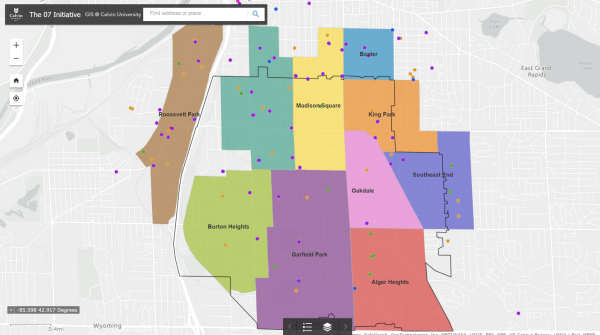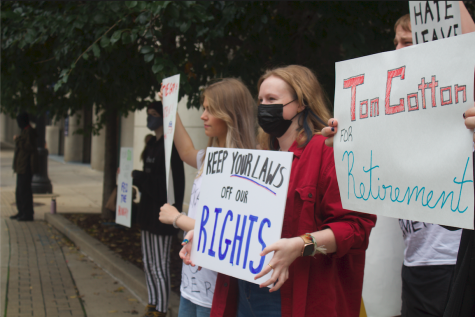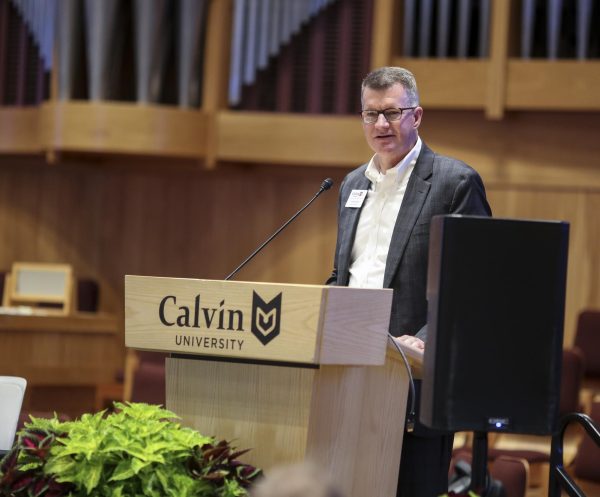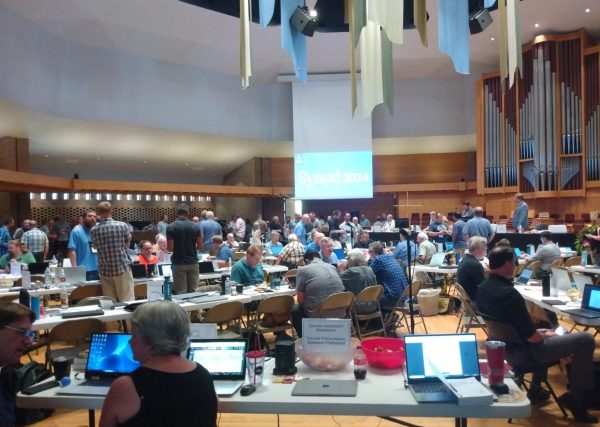Local bishop discusses martyred saint
A conversation with Most Rev. Bishop David J. Walkowiak on the canonization of late Archbishop Oscar Romero
Oscar Romero (right) meeting Pope Paul VI (left).
The assassinated Archbishop Oscar Romero became Saint Romero on Oct. 14. Most Rev. Bishop David J. Walkowiak of the Diocese of Grand Rapids spoke about the life, martyrdom and significance of Romero and his canonization as a saint.
Romero was Archbishop of San Salvador from 1977 to 1980, when he was killed by a right wing death squad under the command of the politician Roberto D’Aubuisson. His tenure was during an El Salvadoran civil war that would eventually claim about 75,000 lives; the wealthy tried to maintain their social advantage and distained those who tried to vindicate the rights of the poor.
The newly canonized saint advocated for liberation theology, which according to Walkowiak, seeks “to vindicate the rights of the poor and lift them up as God’s most beloved.” He continued, “it wasn’t Marxist tinged liberation theology… but the liberation theology of Paul VI.”
Romero’s good friend, Rutilio Grande, S.J., was murdered while working on the behalf of the poor. This murder shook him. He ordered an investigation that was ignored by the government. Walkowiak said, “looking down on [Grande], lying on the ground, [Romero] realized what he did, ‘this, will probably be my fate.’”
On Sundays the archbishop would have his homily broadcasted from the Cathedral and would follow up with commentaries on Monday, often mentioning whom went missing. Walkowiak mentioned that the day before he had issued a plea to the El Salvadoran military to end the violence. Romero pleaded “In the name of God and this suffering people, I implore you, I order you, in the name of God, to cease the repression.”
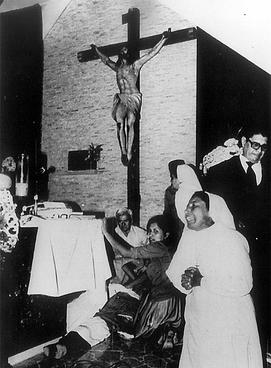
A photo from the assassination of Romero while he was offering Mass.
The next day he held Mass at a hospital, a car pulled up, and shot him. Walkowiak emphasized, “he was murdered in the midst of Mass, right before the liturgy of the Eucharist began.”
The funeral of Romero, like his tenure as archbishop, “was marked by great violence.” Snipers murdered 42 people at his funeral.
Walkowiak shared his distant connection to Romero through Bishop James Aloysius Hickey. Bishop Hickey, later Cardinal Hickey, was Bishop of Cleveland and ordained Walkowiak as a priest.
Cleveland had several missionaries in El Salvador and Hickey would visit them yearly. Hickey knew Romero, and when he was assassinated Hickey went to El Salvador for the funeral.
Walkowiak, talking about his former bishop’s time at the funeral, said “[Hickey] remembered spending a great deal of the Mass lying flat on the ground because of the bullets and the tear gas.”
The Catholic Church has an official, lengthy process for canonizing saints. Walkowiak clarified that the canonization means that “the Church can say with confidence they are with the Angels and Saints beholding the presence of God.” He continued, “it’s really the Christian Hall of Fame.”
Walkowiak said the life of a saint is “one to be imitated.”
Professor Matthew Lundberg, Calvin College religion professor, who teaches a class on martyrdom in history, said, “in a way, Oscar Romero is our older brother in the faith… and though he may not give us the direct helping hand many Catholics think but the story can lend us a helping hand because in many ways the story touches on dynamics that are obviously still part of the world, poverty, wealth, political liberty and repression.”
Romero’s canonization was delayed for disputed reasons. Some say it was because there was speculation within the Church that his theology would enable Marxists. However, Walkowiak said “As far as I can tell, there was nothing really in Romero’s background where people had doubts about whether the canonization should move forward.”
Walkowiak notes that Pope John Paul II had canonized over 500 saints, an extraordinary number, and that Pope Benedict XVI may have wanted to “put the breaks on” and return to a normal, steady rate of recognizing saints.
In addition to the Catholic Church, other Christian traditions, such as The Church of England and the Evangelical Lutheran Church of America, have venerated Romero. Lundberg pointed to the veneration of Romero as one of the ten 20th century martyrs on the Great West Door of Westminster Abbey, of the Anglican Church, in London. His statue is between Martin Luther King Jr. and Dietrich Bonhoeffer.
The canonization was made official on Sunday when Pope Francis held the commemorative Mass at St. Peter’s Square. Six others were also canonized, including Pope Paul VI, who took over the Vatican II council that reformed the Catholic Church.
According to the New York Times, “[Pope] Francis wore the bloodstained cincture of the martyred archbishop,” while performing the commemorative Mass on Oct. 14.






